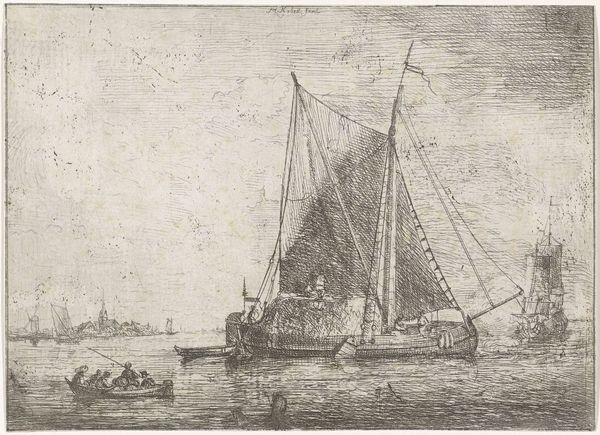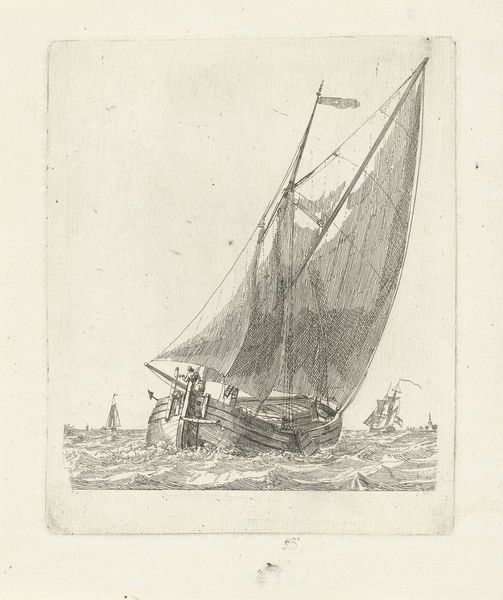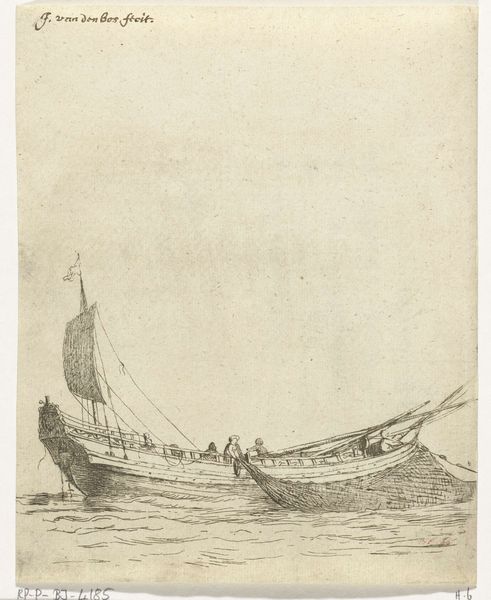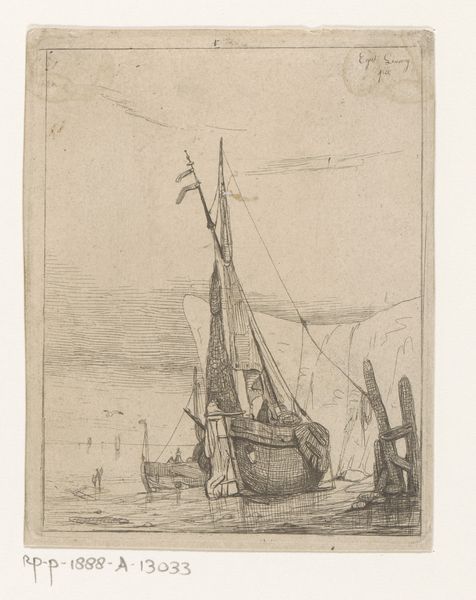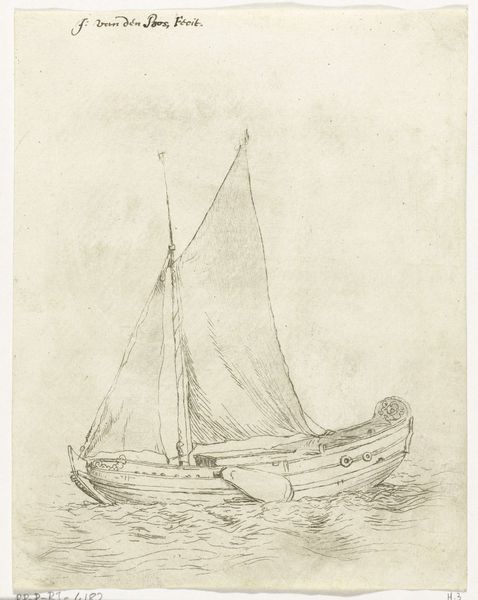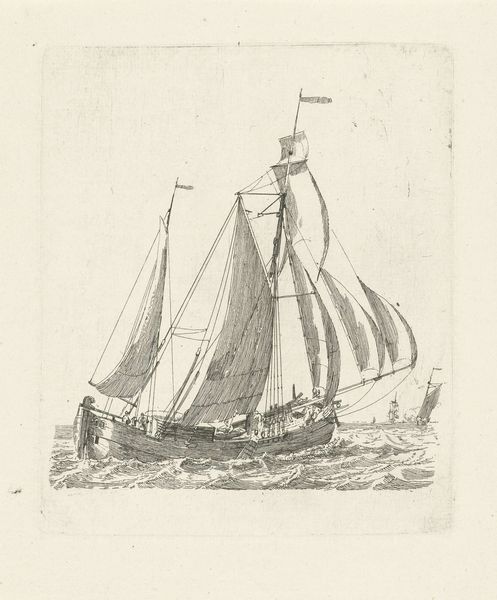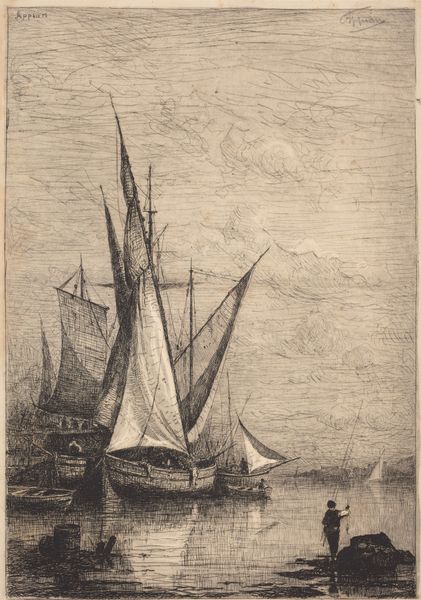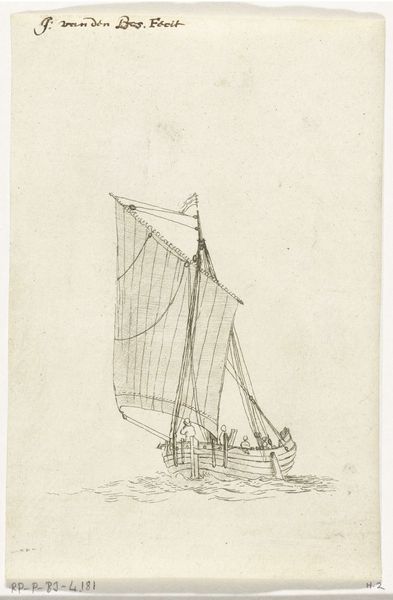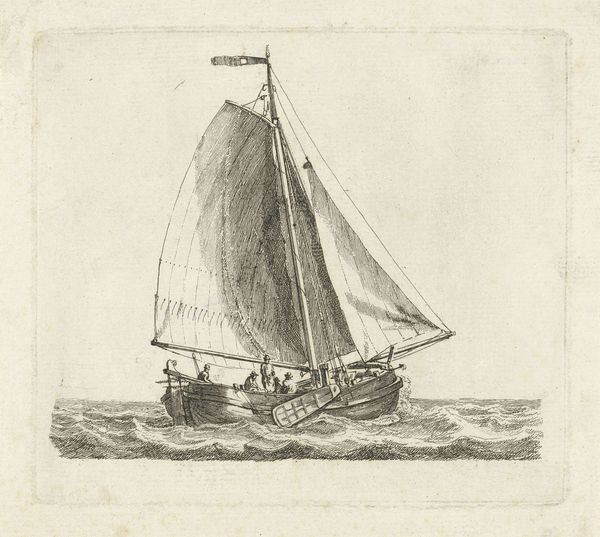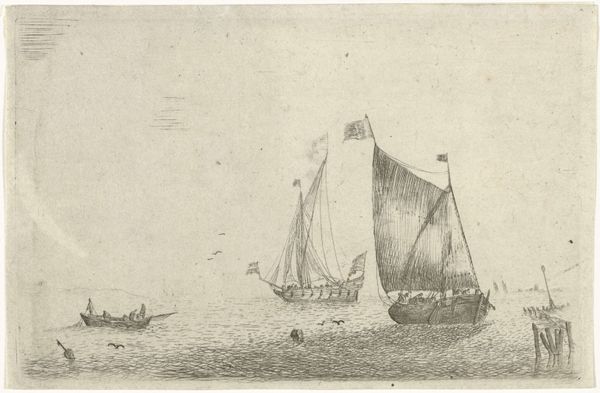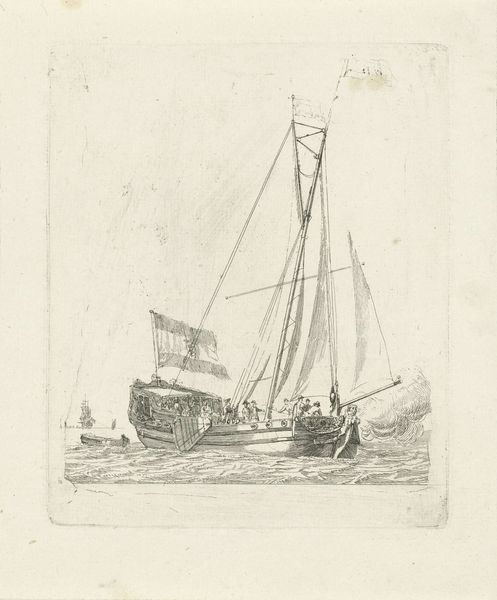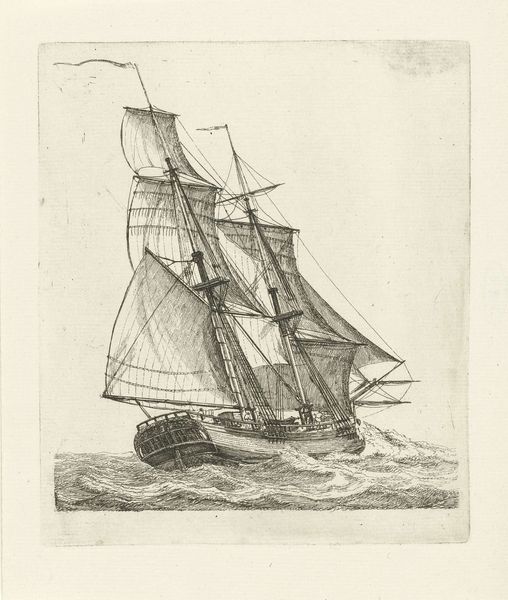
print, etching
#
dutch-golden-age
# print
#
etching
#
landscape
#
etching
#
geometric
Dimensions: height 176 mm, width 143 mm
Copyright: Rijks Museum: Open Domain
Curator: Let’s turn our attention to this etching by Caspar van den Bos, created sometime between 1649 and 1656. It's entitled, "Zeilschip met gestreken zeilen" which translates to "Sailing Ship with Lowered Sails". Editor: My first thought is about the texture. It looks delicate and almost ethereal, especially the rigging and the limp sails. You can almost feel the stillness of the air around it. Curator: It's quite striking how Van den Bos captured a moment of rest in what was likely a bustling maritime environment. The Dutch Golden Age was heavily defined by its shipping power, so to depict a ship at rest is a notable choice. What kind of statements, perhaps, do you think the artist wanted to make about Dutch mercantile power at the time? Editor: The intricate network of lines forming the ship and its rigging are visually appealing in and of themselves; it creates a compelling visual language, almost architectural. We are drawn to analyze how the composition plays with depth and light within this very restricted color space. Curator: Precisely, we could also contextualize the symbol of the ship in the context of empire and exploitation. We have to also understand who this art was for at the time. Prints were often reproduced. Who were the viewers of these works? To what extent do we consider the environmental consequences of the age of exploration being shown in an artwork about a boat? Editor: Certainly. While the broader implications you point out can't be ignored, analyzing the careful arrangement of forms allows for appreciating Van den Bos' ability to turn an everyday scene into something visually fascinating. I am also drawn to analyze what is geometrically pleasing or jarring and try to infer meaning. The lack of visible human presence lends an air of mystery, doesn't it? It emphasizes the ship as an object—a beautiful machine. Curator: Indeed. But the absence also raises questions: who controls this machine? Whose labor makes it function? Art and aesthetics cannot, in my view, exist separate from ethical, political, or economic contexts. Considering the social dynamics invites us to critically think about its narratives. Editor: And I suggest thinking about art through material and form allows us a way in to further explore that relationship you just presented!
Comments
No comments
Be the first to comment and join the conversation on the ultimate creative platform.
